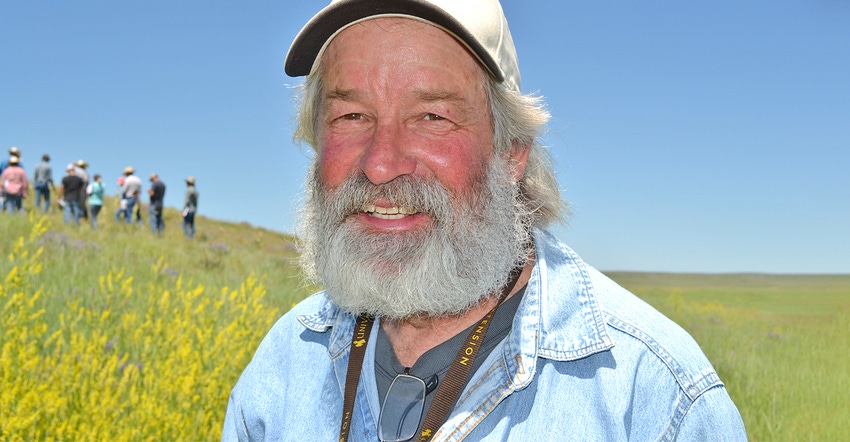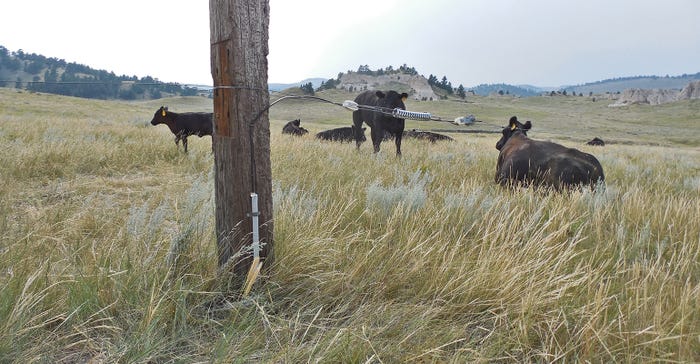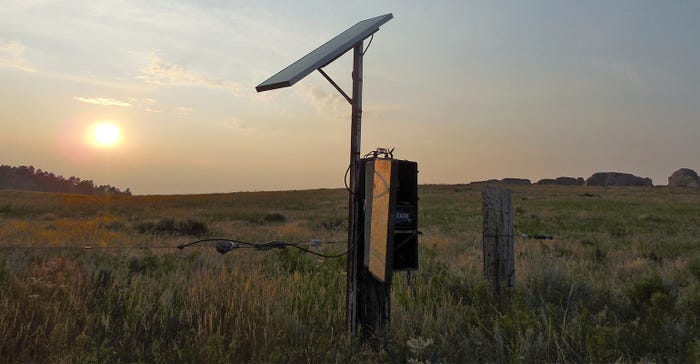August 27, 2018

Editor’s note: This is the 10th story in a series exploring how ranchers and farmers are benefiting from renewable energy.
By Robert Waggener
What comes to mind when you hear the term “living off the grid”? A disillusioned teen heading to the Alaskan bush to discover the meaning of life? An adventurous couple taking up roots in Canada’s boreal forest? Yet another reality TV show?
But have you pondered off-grid living as a way to expand your ranching enterprise?
“I believe there are very good opportunities for ranchers to live off the grid, absolutely,” says Harold Stroh. “Though land prices were very high at the time we bought our land in Wyoming, it was made affordable because it was in the middle of nowhere, many miles from electricity.”
And what Stroh and his wife, Carla, built up by hand may give you something to consider when it comes to making energy-efficient upgrades to a new or existing home, and improving infrastructure around the ranch by effectively using renewable energy.
“Living off-grid is not a panacea, but it does allow you to live in places you wouldn’t be able to otherwise live,” Stroh says.
Related: Powering a ranch with sunshine
And even if off-grid living doesn’t sound appealing, modern technology can help ranchers cut down on energy expenses and expand cattle operations into areas that were previously ungrazed because of lack of water year-round.
“I believe there are some bypassed opportunities out there for ranchers, but it means being open to new ideas and modern technology,” he says.

CONTENT CATTLE: Harold Stroh creates from 20 to 40 temporary paddocks each year by running temporary poly wire from a permanent electric fence to the barbed-wire perimeter fence. A nearby 30-watt photovoltaic panel with a charge controller powers the permanent electric fence.

An off-grid lifestyle
For 20 years, while living off-grid in Colorado, where Stroh worked as a geologist for an energy company and Carla taught middle school art, they banked every dollar they could in hopes of one day buying land and — later — a small herd of cattle.
The former happened in 1997, shortly after the couple toured a 1,000-acre parcel off the beaten track in eastern Wyoming’s Niobrara County, the least populated county in the least populated state in the nation. Though land prices were high at the time, the “For sale” acreage was reasonably priced; there were virtually no improvements, and the closest powerline was 4 miles away.
“The last time I checked, which was a number of years ago, it would have cost $40,000 to bring power in here,” Stroh says. “We only have about $15,000 into our electrical infrastructure — plus we aren’t paying a monthly electrical bill, and aren’t paying for propane to heat the house or fuel to run generators.”
Used to living off-grid, the couple decided to purchase the land. Four years later, they moved to Wyoming and began constructing their third home by hand, a residence that would take them into retirement.
“We scratched and saved every penny we could to make this dream come true,” Stroh says. “My wife loves horses, I am passionate about native grass and we both wanted to raise grass-fed beef.”
But what about the commitment of living off-grid?
“We get along with each other very well, we like being out in the middle of nowhere, we like being self-reliant — and if the power goes out, it’s our problem,” says Stroh. He notes that in the nearly 40 years of living without commercial electricity, they’ve only been without power twice, including once when lightning hit a power inverter to their solar installation.
Think energy conservation
Living without some modern conveniences is another off-grid requirement.
“The first step you take is energy conservation,” says Stroh, who notes they use about one-quarter of the electricity that the average household in Wyoming uses.
“This is not for everyone; I certainly don’t want to imply that,” he stresses. “For instance, we don’t have a dishwasher or electric dryer. During summer, we dry our clothes outside on a clothesline, and in winter we hang clothes on a line near the woodstove.”
Stroh says that if a hired hand or member of a ranch family is excited about the prospect of living off-grid, that could create a situation for expansion.
“Start looking at isolated pieces of ground for sale. That’s where off-grid has application. If you’re 2 or more miles away from a power line, some opportunities could open up. The answer is solar panels, wind turbines and maybe utilizing geothermal heat — not gasoline- or diesel-powered generators and propane.”
Renewable energy and grazing
The Strohs are retirees who run about 55 cattle on their 1,000-acre ranch near Lusk, Wyo. They lease out pasture to a local producer who grazes nearly 60 spayed heifers during late spring and summer.
Stroh intensively manages the cattle, grazing them in 5- to 6-acre paddocks, and is passionate about native grasses. He moves cattle every two to three days, generally using a “take one-third, leave two-thirds” approach to ensure that stands of native grasses and forbs remain healthy and vibrant.
A 1½-mile-long permanent high-tensile wire divides the ranch lengthwise down the middle. It is electrified by a 2-joule charger powered by a 12-volt battery, which is kept charged by a 30-watt photovoltaic panel with a charge controller.

HIGH PLAINS SUNSET: A 30-watt photovoltaic panel with a charge controller powers a permanent electric fence on this eastern Wyoming ranch.

Stroh creates from 20 to 40 temporary paddocks each year by running temporary poly wire from the permanent electric fence to the barbed-wire perimeter.
The cattle use three undeveloped springs on the property, but their main drinking source is provided by two wind-powered wells that pump water to 20-foot-diameter bottomless tanks with concrete floors.
Stroh has done some innovative things to provide water to his cattle throughout winter, and this will be discussed in an upcoming story in the series.
The couple raises grass-fed beef that is sold to customers in Wyoming, Colorado and other states. Their herd currently consists of 20 mother cows, 10 2-year-olds that go to slaughter this fall, 10 yearlings that will be slaughtered next year, and 14 calves.
Stroh admits it’s a pretty small herd for Wyoming standards; but their cattle, combined with the leased-out pasture, provide important retirement income.
“When we moved to Wyoming we didn’t know a lot about raising cattle, but we have great neighbors who have helped us,” he says. “Our local conservation district, NRCS [Natural Resources Conservation Service] folks, grazing experts like Jim Gerrish and my primary mentor — rancher JoAnn Wade — have assisted us in developing a very sound Management-intensive Grazing plan.”
You May Also Like




